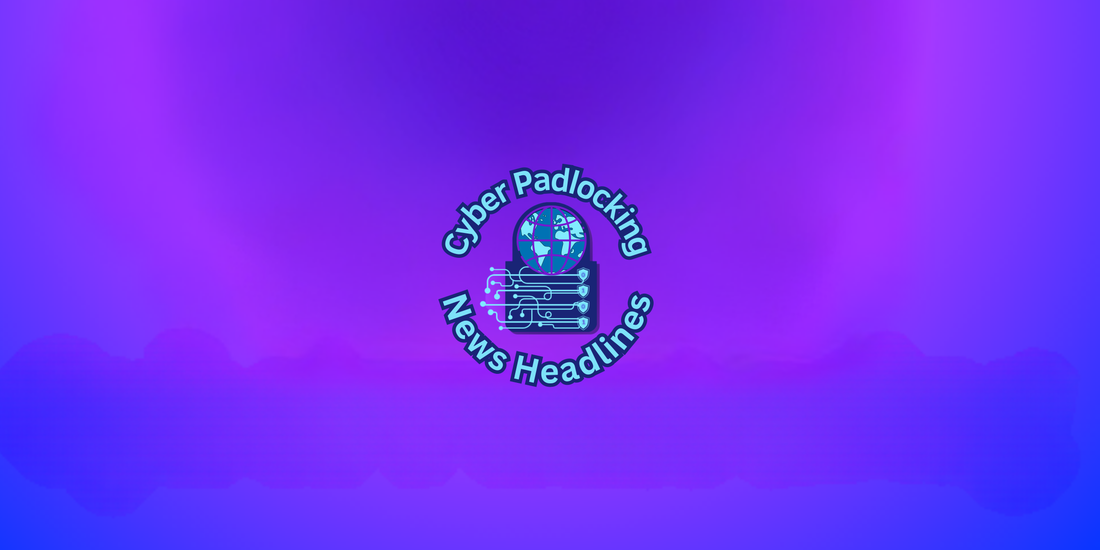
Cybersecurity News Headlines: 7th October – 21st October 2025
Share
Cybersecurity has become a top priority for all businesses with small to medium-sized businesses (SMBs) now at the front of the list for global threat actors. Over the last couple of weeks there has been a surge in high-impact data breaches, ransomware campaigns, and supply-chain attacks affecting companies from F5 Networks to retail brands and public transport operators. This cyber security news roundup breaks down the key findings, responses, and the lessons every SMB owner and cyber professional should take from them to strengthen their resilience against.
F5 Networks Breach Source Code Theft Raises Supply-Chain Concerns
F5 Networks, a major vendor of load balancers and application delivery controllers (BIG-IP), confirmed a long-running intrusion by a nation-state actor. The attackers accessed internal systems and exfiltrated portions of product source code. Security agencies warned that stolen code could fast-track the discovery of new zero-day vulnerabilities across thousands of F5-powered networks.
Response - F5 released urgent security patches and coordinated with CISA, which issued emergency directives for federal systems. Customers were told to patch immediately and verify configurations.
Future Implications – This incident challenges customer trust and may accelerate scrutiny of its secure-development lifecycle. The risk for SMB’s lies with inherited exposure, many use managed service providers or cloud hosts running F5 gear. Those without patch automation may remain vulnerable for months. It is expected that a renewed emphasis on vendor transparency and “secure-by-design” procurement will be more prominent.
Sources: Reuters, Bloomberg, Axios, Cybersecurity Dive, TechRadar
The Salesforce Ecosystem Supply-Chain Compromise, via Drift/Salesloft Integrations
Security researchers have reported a compromise involving third-party marketing integrations within the Salesforce ecosystem including Drift and Salesloft. Attackers have abused OAuth tokens and API permissions to infiltrate customer CRM data.
Response - Vendors have revoked tokens, issued patches, and urged customers to exchange credentials and audit all third-party app permissions. Salesforce users were advised to check logs for anomalous API activity as soon as possible.
Future Implications – Small & medium businesses are especially exposed from this due to many depending on multiple SaaS integrations with broad privileges and minimal monitoring. This incident reinforces the need for least-privilege access, vendor monitoring, and regular credential rotation. Industry-wide, regulators may soon require stronger third-party risk attestations and SaaS supply-chain transparency.
Sources: Sangfor Labs, industry advisories
Retail & Transport Data Leaks Mango and LNER Hit by Vendor Breaches
Spanish fashion retailer, Mango and UK train operator LNER have both disclosed customer data exposures after third-party marketing suppliers were breached. The exposed data included names, email addresses, and limited contact details, however thankfully no passwords or payment data were leaked.
Response - Both organisations notified affected customers, alerted data-protection regulators, and provided phishing-prevention advice. Mango have confirmed that its internal systems were unaffected by this.
Future Implications - These incidents illustrate the cascading risk of compromise. Even when a company’s own defences are strong, customer data can still be leaked via outsourced processors. SMBs should always vet marketing and communications providers to ensure contracts include security obligations. They should also prepare customer-notification playbooks. Regulators are likely to continue imposing fines for insufficient vendor inaccuracy, raising compliance pressure on smaller firms.
Sources: BleepingComputer, Malwarebytes, TechRadar, Mango & LNER official notices
Oracle / CL0P Extortion Campaign Legacy Systems in the Crosshairs
The CL0P ransomware group have exploited vulnerabilities in Oracle E-Business Suite and similar enterprise platforms, which has impacted multiple organisations including the U.S. regional airline, Envoy Air. Stolen data was listed on sites specialising in leaked data, which in turn has resulted in extortion demands.
Response - Oracle has quickly released guidance and patches to mitigate this, while Envoy Air confirmed law-enforcement involvement and internal remediation. The campaign has highlighted weaknesses in outdated, on-premises software.
Future Implications – Any SMBs running older enterprise applications are likely to face similar threats and often don’t have dedicated patch teams. This attack may accelerate cloud migrations and drive insurers to demand proof of timely patching. It is expected that increased attention to legacy system being decommissioned and vulnerability-management programs becoming more important.
Sources: Reuters, Oracle security advisory
Geopolitical Cyber Activity State-Level Espionage and Critical-Infrastructure Risks
China has accused U.S. agencies of long-term espionage against its National Time Service Centre. At the same time researchers have simultaneously reported new telecom intrusions exploiting Citrix & NetScaler appliances worldwide.
Response - Governments have issued diplomatic statements and advisories while security agencies warned critical-infrastructure operators to harden systems and monitor for APT activity.
Future Implications – These events have blurred the lines between corporate and geopolitical risks for multinational supply chains. SMBs that are serving defence, telecom, or energy sectors are now a potential pivot target for threat actors, and compliance frameworks such as NIS2 and CMMC will likely tighten the regulations to compel smaller suppliers to elevate their security maturity.
Sources: Reuters, The Hacker News
CISA KEV Updates Urgent Patch Deadlines and Windows SMB Exploits
Cybersecurity and Infrastructure Security Agency (CISA) expanded its Known Exploited Vulnerabilities (KEV) list with the newly weaponized Microsoft and third-party flaws, some affecting the Windows SMB (Server Message Block) protocol, and active exploitation has been confirmed in the wild.
Response - CISA have issued binding directives for U.S. federal agencies and recommended private-sector patching within 10 days, with Microsoft and other vendors releasing fixes and mitigation scripts as well.
Future Implications - For SMBs delayed patching remains the number one cause of compromise. These advisories reinforce that basic hygiene saves businesses, maintaining automated updates and vulnerability scanning should be seen as operational resilience, not optional overhead. It is expect that insurers and large clients will incorporate KEV compliance into contractual obligations.
Sources: CISA KEV bulletins, industry advisories
Industry Trend AI-Driven Phishing and Ransomware Surge Against SMBs
Fresh research from Guardz, CrowdStrike, and ExtraHop shows that there is a continued rise in ransomware and BEC (business-email compromise) attacks. Adversaries are increasingly using AI to craft realistic phishing content and automate extortion campaigns, these are often targeting small-to-mid-sized organisations with limited defences.
Response - Vendors and governments have released tailored guidance for SMBs focusing on MFA, data backups, and incident-response planning to help close the gaps. Many insurers are now pushing for the requirement of proof of these controls before issuing cyber policies.
Future Implications – It is expected that managed detection and response (MDR) and cyber-readiness certification services aimed at SMBs will grow in popularity and necessity. Proactive measures such as phishing-simulation training, patch automation, endpoint monitoring look to become the new baseline for doing business safely in 2026.
Sources: Guardz SMB Cyber Report, CrowdStrike Threat Trends, ExtraHop research, BizTech Magazine
Quick Reference Table
|
# |
Incident |
Affected Sector |
Main Vector |
SMB Relevance |
Primary Lesson |
|
1 |
F5 Networks Breach |
Networking / IT |
Source-code theft |
Indirect (MSP risk) |
Patch vendor gear rapidly |
|
2 |
Salesforce Integration Compromise |
SaaS / CRM |
OAuth token abuse |
High |
Limit API privileges |
|
3 |
Mango & LNER Vendor Breaches |
Retail / Transport |
Third-party supplier |
High |
Vet vendors & contracts |
|
4 |
Oracle / CL0P Campaign |
Enterprise Apps |
Legacy vuln exploitation |
Medium |
Decommission old systems |
|
5 |
State Espionage & APT |
Critical Infrastructure |
Advanced persistent threat |
Indirect |
Harden supply-chain links |
|
6 |
CISA KEV Alerts |
Multi-industry |
Patch management |
High |
Automate updates |
|
7 |
AI-Phishing & Ransomware Trend |
All sectors |
Social engineering |
Very High |
Train staff, enforce MFA |
Conclusion
From vendor relationships to day-to-day patching, every organisation especially SMBs sits within a wider digital ecosystem that can be exploited at its weakest point.
Focusing on three fundamentals can dramatically reduce exposure:
- Visibility - know every system, integration, and supplier.
- Velocity - patch fast and rehearse incident response.
- Verification - test your defences through audits or penetration testing.
Cyber Padlocking helps SMBs strengthen resilience through penetration testing, Cyber Essentials certification, and tailored staff training.
Book your free cyber-readiness assessment Here
